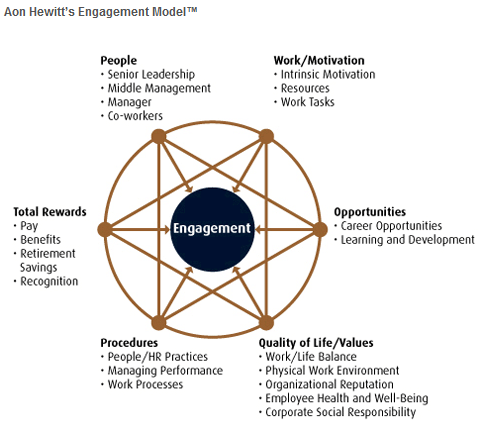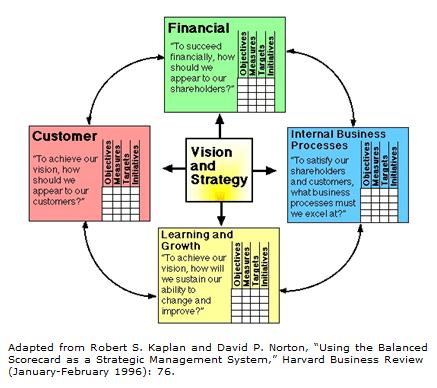With the latest Aon Hewitt results being released today, it seems a good time to explore this most obvious of sounding questions: why be a great workplace?
Some answers that spring to mind:
- Why not be a great workplace?
- Because it's more fun!
- Side benefits like engaged employees who seek to delight your customers, improve the business continually, and have great things to say about your company.
But maybe an error lies in deciding to make "being a great workplace" the goal, rather than an outcome of other efforts.
Consider the dimensions Aon Hewitt uses to determine workplace engagement:

If you squint and look a little sideways at this list of characteristics, you could just as easily be looking at the same elements that fundamentally make up a really well-run business (and not just from an HR perspective), but rather looking at a business holistically and from all angles.
Think of the Balanced Scorecard strategic planning and management system:

1. The learning and growth perspective:
This perspective includes elements involving employee training and corporate attitudes to self-improvement. And it's more than just training; this also encapsulates mentoring, coaching, tools and processes to inspire "high performance work systems".
Now turn your eye back to the workplace engagement model and see how many elements fall into this arena:
- Opportunities; Learning Opportunities — being an organization that supports learning and development of its employees.
- Ensuring there are systems and tools in place so that your people can make the most of themselves as possible. This in turn will have an impact on the quality of leadership and on respect amongst co-workers.
- Intrinsic motivation (or, "getting a sense of accomplishment from work") — there are few greater motivators for individuals beyond continual learning and self-improvement.
2. The business process perspective:
This is all about your internal business processes. How well is your business running; are you meeting your customer needs? And in workplace engagement-speak:
- Opportunities; Career opportunities — have options for your star performers so that they can contribute more to the organization to make it a better-run business.
- Creating a positive work environment, helping people understand your organization's goals and how they can help meet them, and having work processes so people can be as productive as possible.
3. The customer perspective:
As you'd think, this is everything to do with your customers. Are they satisfied? Loyal? Do you really understand your customers' needs? (If you don't have paying customers, you at least have members you serve or some analogous relationship with people outside your organization.)
Using an engaged workforce lens, you would be looking at:
- Work/Motivation; Work tasks — as in, if someone enjoys their "tasks", they're probably leaving happy customers in their wake.
- Quality of life/values; Work/life balance, Physical work environment, Employee health and well-being — again, people with balanced, healthy lifestyles will have great interactions with customers.
- Quality of life/values; Organizational reputation, Corporate Social Responsibility — one a longstanding established route to customers, the other proving to be just as effective a method for inspiring customer loyalty.
4. The financial perspective:
How your business is doing financially, but may also include risk management and cost-benefit data. Not surprisingly, a number of engaged workplace facets are represented here:
Total Rewards
- Much of an organization's cost base can be centered in this area and often that's where most of the tension between "happy workplace" and financial performance can seem to stem from. However, as many companies have discovered, seeking to aggressively save money in Total Rewards can lead to higher turnover (cost to the organization), unhappier clients (cost to the organization), less productivity (cost to the organization), and a restricted talent pool (cost to the organization).
Work/Motivation; Resources
- What are the smartest investments in the business that will allow people to have access to the tools and processes they need to be the most effective?
So to come back to the original question of "why be a great workplace", really the better question is "why be a well-run workplace". Set out to be an overall well-run organization, and the "great workplace" can't help but follow.






